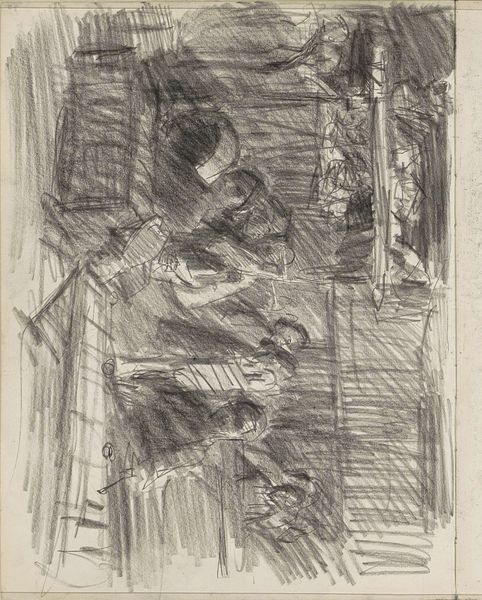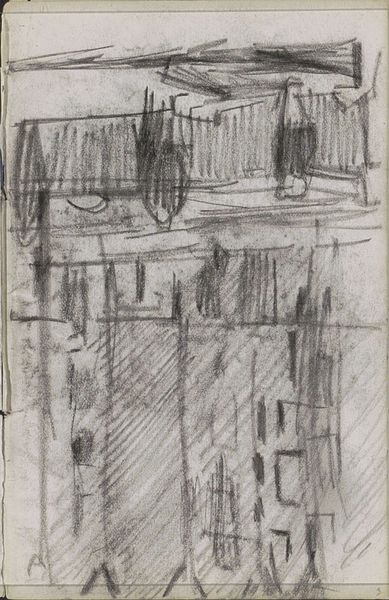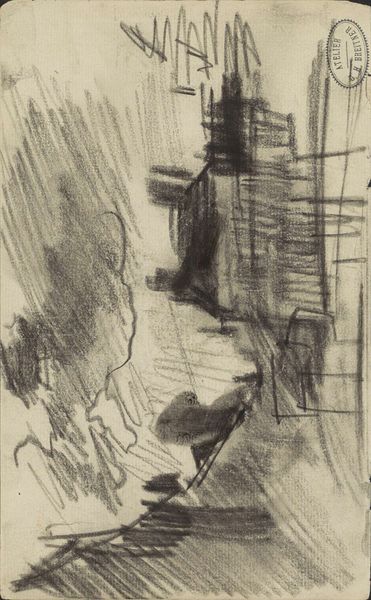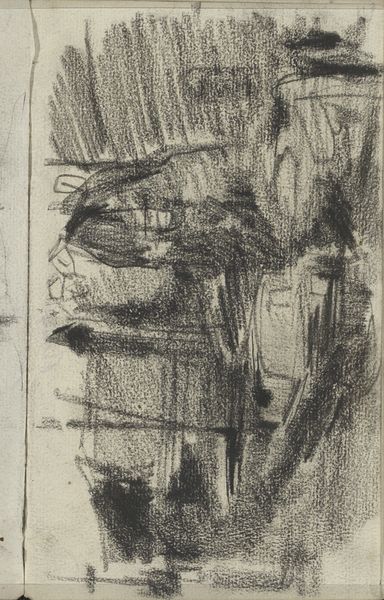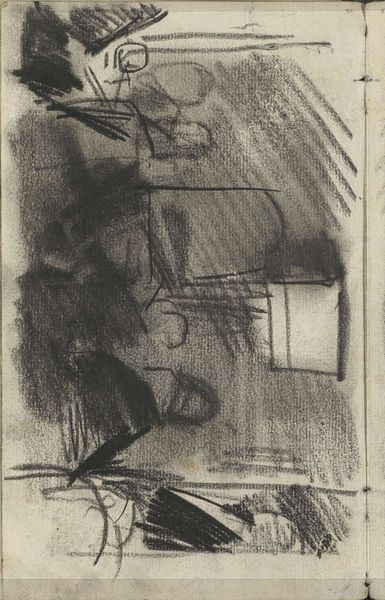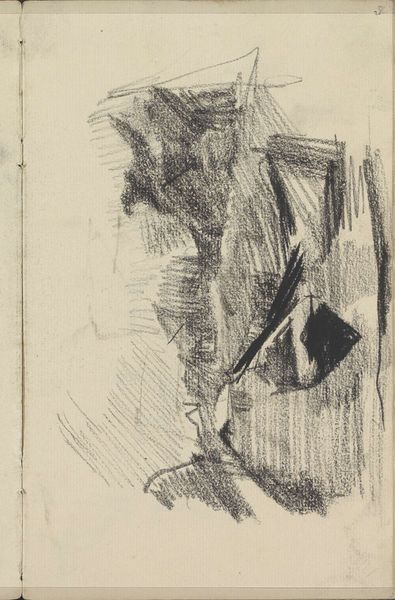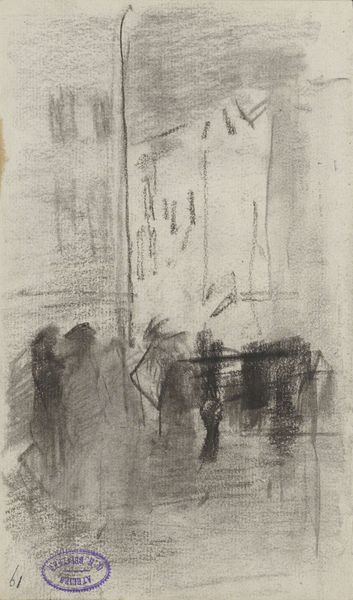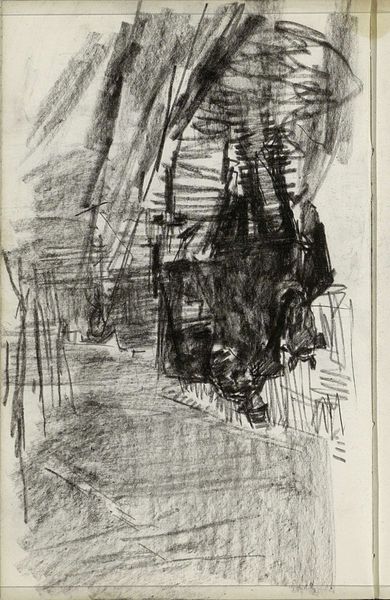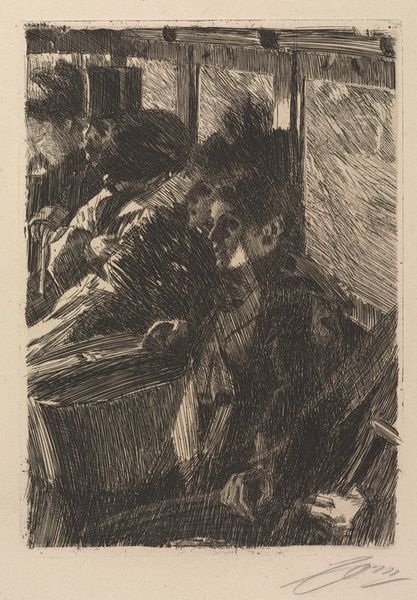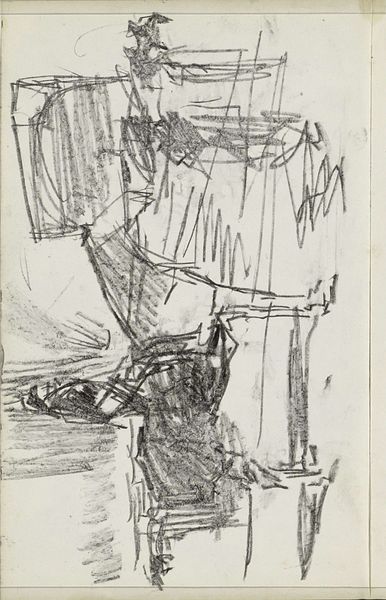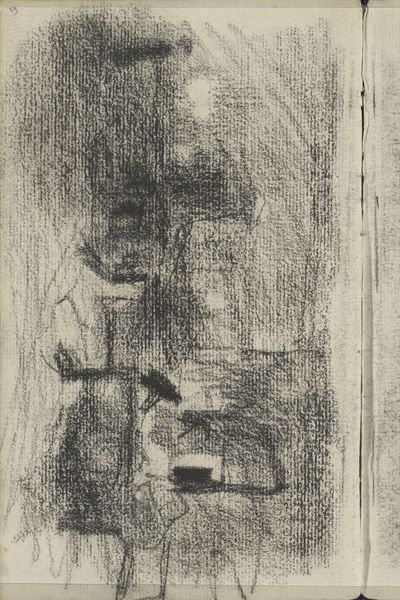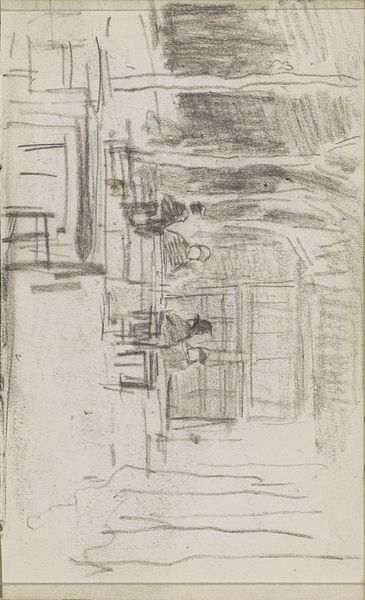
Copyright: Rijks Museum: Open Domain
Curator: Immediately, I’m struck by the sheer dynamism of the piece, an almost frenetic energy captured in charcoal. Editor: Indeed! We're looking at a charcoal drawing titled "Vrouwen en mannen op straat," created by Isaac Israels sometime between 1875 and 1934. It's currently held here at the Rijksmuseum. The work depicts a street scene, full of bustling figures. What resonates for you in terms of the composition? Curator: The bold strokes seem to suggest constant motion. But in a broader sense, I see the dense strokes and shadows that evoke the anonymity of modern urban life, of individuals moving within larger crowds that can feel rather alienating. The heavy use of dark charcoal enhances this impression of anonymity, as individual features fade into indistinct forms. Editor: I agree entirely. From a symbolic viewpoint, the repeated motif of clustered forms evokes ideas of community and societal pressures, simultaneously showing belonging and anonymity. Israels skillfully conveys the dichotomy intrinsic to city existence. The dark charcoal could be seen as not just aesthetic, but as a visual metaphor for the obscured identities in urban crowds. It creates a dramatic tension. Curator: Absolutely, it raises an interesting historical point. In this era, depictions of everyday street life became more prevalent. This piece really exemplifies that fascination with modernity and the everyday, moving away from classical, history paintings that used to dominate art world discourse. The work mirrors rapid urbanization, the increasing density of city living and a kind of loss of individual distinction amidst it. It presents us a perspective from the rising, expanding, chaotic turn of the century, of the social fabric’s evolving texture and visual language that comes with such profound change. Editor: A fascinating view, placing the art in a historical and cultural context. When viewing with the artist's cultural memory as guidance, Israels encourages a critical viewpoint of our continuously transforming society. By doing so, they echo long-lasting emotions related to urbanization: expectation, anonymity, belonging, alienation and, naturally, transition. This artwork functions as both document and omen, an outstanding accomplishment. Curator: Yes, looking at it now, you've brought an unexpected wealth of meaning. This work becomes more evocative upon a further view with greater consciousness of the possible symbolism. Editor: Agreed. Exploring pieces like these is a fantastic invitation into discussions, I suppose, since art and meaning evolve through interaction!
Comments
No comments
Be the first to comment and join the conversation on the ultimate creative platform.
